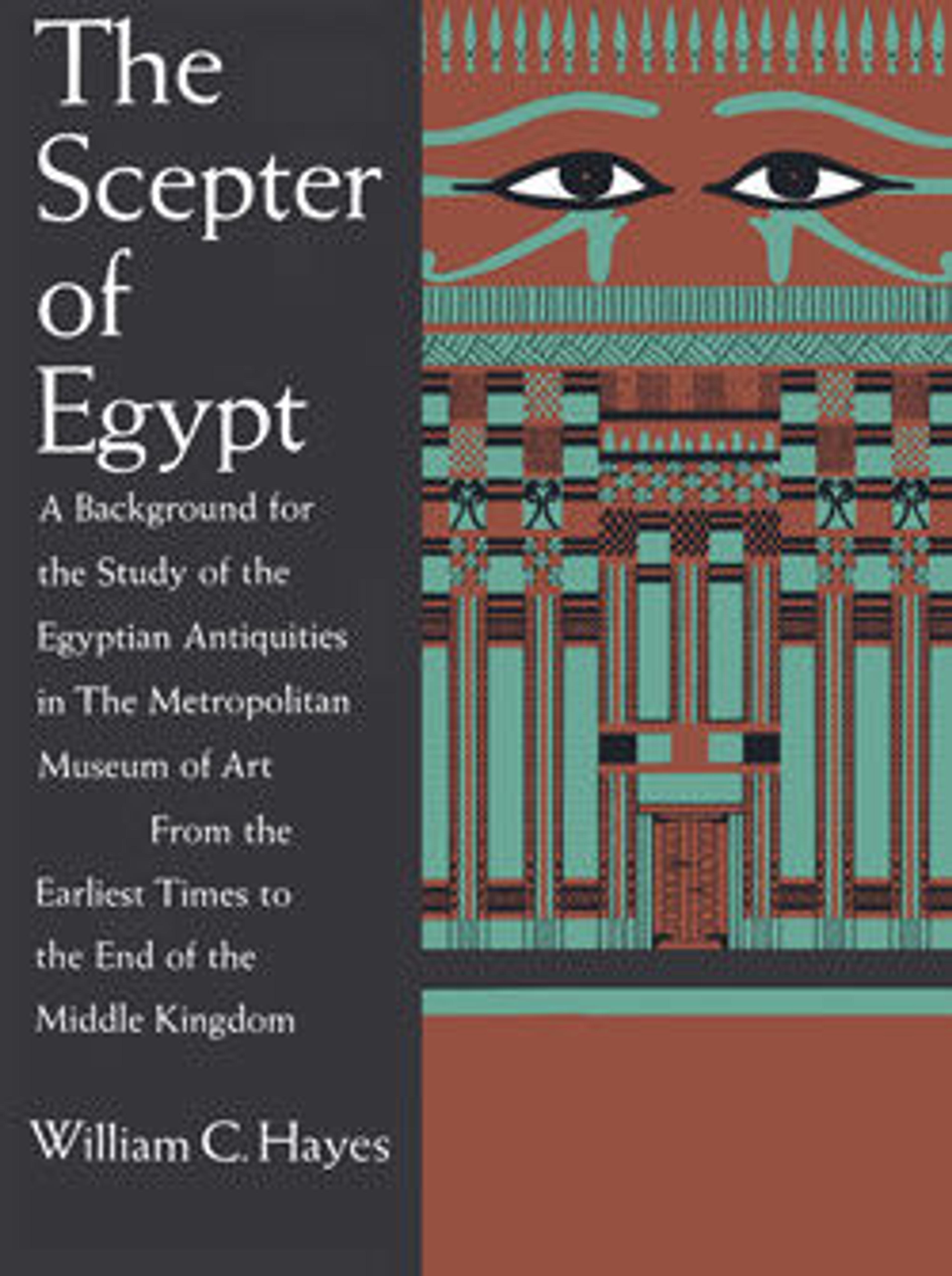Lower Part of the Door of a Tomb
This door was found in situ and slightly ajar at the entrance to a rock-cut tomb from the Middle Kingdom (see Web Label Figure 1). Such doors have rarely survived from ancient Egypt, as most were removed and reused elsewhere once the cult for the original tomb owner was no longer celebrated. The top half was destroyed in antiquity by a combination of wasps, who gathered the wood fiber for use in their nests, and later undertakers, who carried coffins in for later intrusive burials over the lower half. What remained was trapped in place by rocks that fell from the cliffs above.
The door is composed of seven vertical planks of wood, two inches thick, doweled together edge to edge and reinforced on the back by numerous horizontal battens spaced eight inches apart. The outside was coated wtih stucco. The lock had been cut away in ancient times, but mud seals used to secure it were found under the door. Several additional fragments, including one preserving part of the cartouche of a king Mentuhotep, were recovered nearby.
More than a thousand years later the vizier Nespekashuty, who served under King Psamtik I (664-610 B. C.) had his tomb cut into the cliff close to this one, but the remains of the earlier doorway had by that time totally disappeared under debris.
The door is composed of seven vertical planks of wood, two inches thick, doweled together edge to edge and reinforced on the back by numerous horizontal battens spaced eight inches apart. The outside was coated wtih stucco. The lock had been cut away in ancient times, but mud seals used to secure it were found under the door. Several additional fragments, including one preserving part of the cartouche of a king Mentuhotep, were recovered nearby.
More than a thousand years later the vizier Nespekashuty, who served under King Psamtik I (664-610 B. C.) had his tomb cut into the cliff close to this one, but the remains of the earlier doorway had by that time totally disappeared under debris.
Artwork Details
- Title:Lower Part of the Door of a Tomb
- Period:Middle Kingdom
- Dynasty:Dynasty 11
- Date:ca. 2051–1981 B.C.
- Geography:From Egypt, Upper Egypt, Thebes, Deir el-Bahri, Tomb MMA 509a, MMA excavations, 1922–23
- Medium:Sycomore wood, gesso
- Dimensions:H. 215 × W. 151 × D. 11 cm (84 5/8 × 59 7/16 × 4 5/16 in.)
- Credit Line:Rogers Fund, 1923
- Object Number:23.3.174a
- Curatorial Department: Egyptian Art
More Artwork
Research Resources
The Met provides unparalleled resources for research and welcomes an international community of students and scholars. The Met's Open Access API is where creators and researchers can connect to the The Met collection. Open Access data and public domain images are available for unrestricted commercial and noncommercial use without permission or fee.
To request images under copyright and other restrictions, please use this Image Request form.
Feedback
We continue to research and examine historical and cultural context for objects in The Met collection. If you have comments or questions about this object record, please contact us using the form below. The Museum looks forward to receiving your comments.
